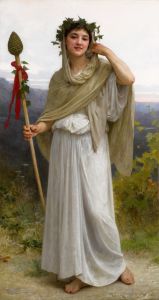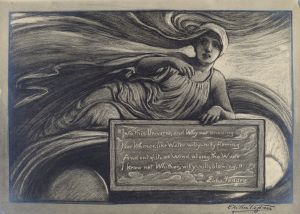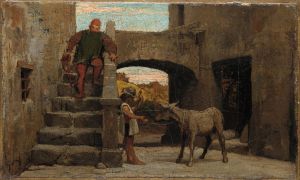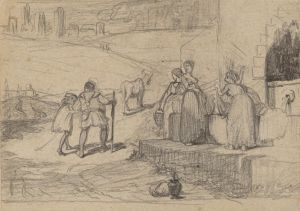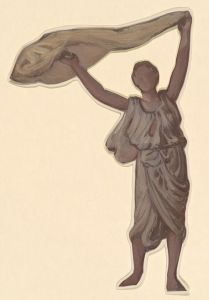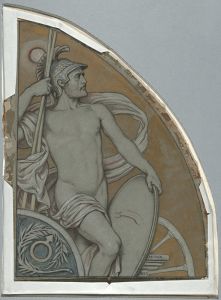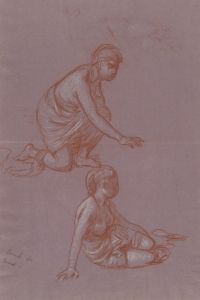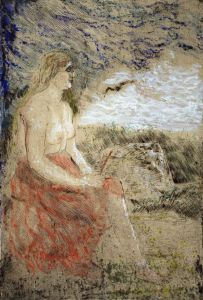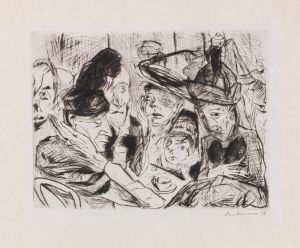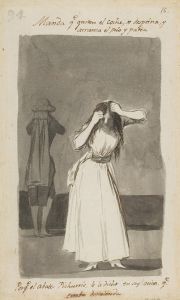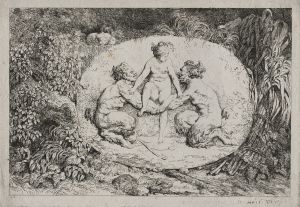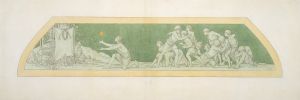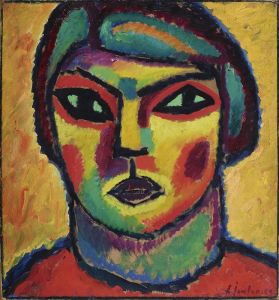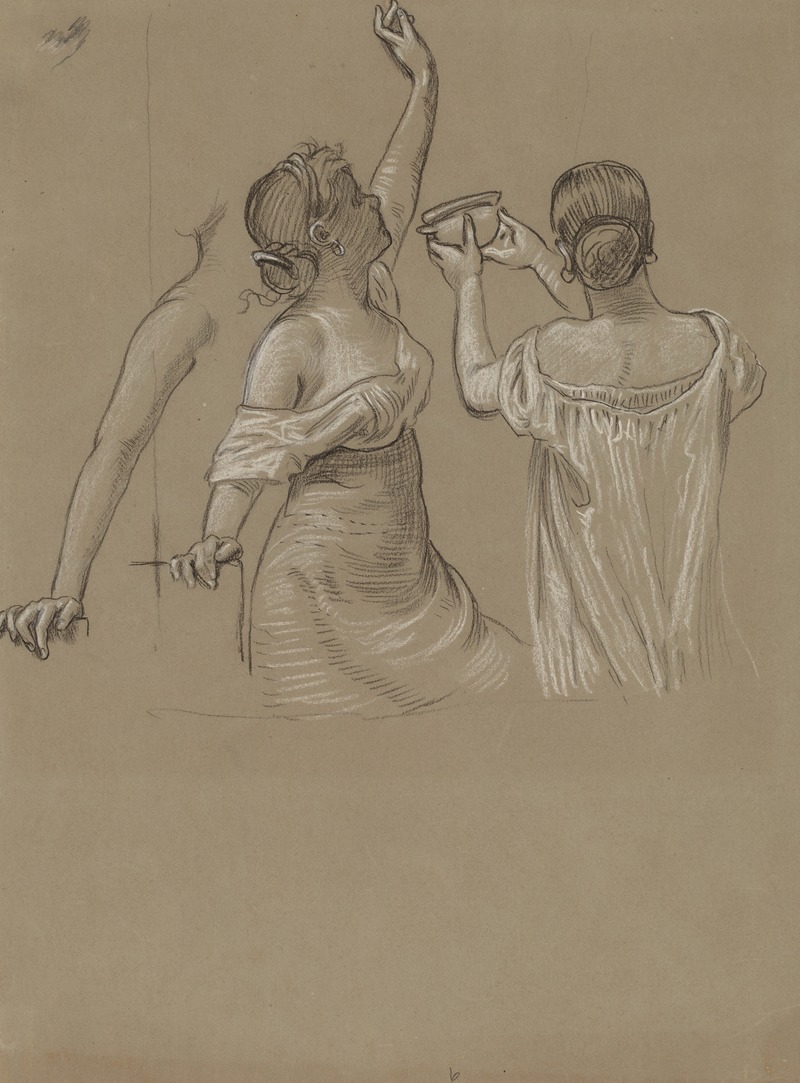
Dionysian Revelers
A hand-painted replica of Elihu Vedder’s masterpiece Dionysian Revelers, meticulously crafted by professional artists to capture the true essence of the original. Each piece is created with museum-quality canvas and rare mineral pigments, carefully painted by experienced artists with delicate brushstrokes and rich, layered colors to perfectly recreate the texture of the original artwork. Unlike machine-printed reproductions, this hand-painted version brings the painting to life, infused with the artist’s emotions and skill in every stroke. Whether for personal collection or home decoration, it instantly elevates the artistic atmosphere of any space.
Elihu Vedder's Dionysian Revelers is a painting created by the American artist Elihu Vedder, who was known for his association with the Symbolist movement in the 19th century. Vedder, born in 1836 and active until his death in 1923, was celebrated for his mystical and allegorical works, often drawing inspiration from mythology, literature, and philosophical themes. Dionysian Revelers reflects his interest in classical mythology and the symbolic representation of human emotions and experiences.
The painting depicts a scene inspired by the ancient Greek god Dionysus, the deity of wine, revelry, and ecstasy. In Greek mythology, Dionysus was often associated with the loosening of social norms and the embrace of uninhibited joy and creativity. The revelers in the painting are likely followers of Dionysus, known as maenads or satyrs, who are frequently portrayed in mythological art as engaging in ecstatic dances and celebrations. Vedder's interpretation of this theme captures the spirit of liberation and the transcendence of ordinary life through ritual and festivity.
Vedder's artistic style in Dionysian Revelers demonstrates his skill in combining classical influences with the emerging Symbolist aesthetic of his time. The painting is characterized by its dynamic composition, rich use of color, and attention to detail, which evoke a sense of movement and vitality. The figures in the artwork are rendered with a sense of fluidity, emphasizing the energy and passion of the scene. Vedder's use of light and shadow further enhances the dramatic effect, creating a dreamlike atmosphere that invites viewers to immerse themselves in the mythical world he portrays.
The exact date of creation for Dionysian Revelers is not widely documented, but it is consistent with Vedder's broader body of work, which often explored themes of mythology and spirituality. Vedder spent much of his career in Italy, where he was influenced by the classical art and architecture of the region. This environment likely played a role in shaping his artistic vision and his fascination with ancient Greek and Roman culture.
While Dionysian Revelers is not as widely known as some of Vedder's other works, such as his illustrations for Edward FitzGerald's The Rubaiyat of Omar Khayyam, it remains an example of his ability to merge mythological themes with a deeply personal and imaginative artistic approach. The painting reflects Vedder's enduring interest in exploring the intersections of art, mythology, and the human condition.
Further details about the painting's current location or provenance are not readily available in public records.





